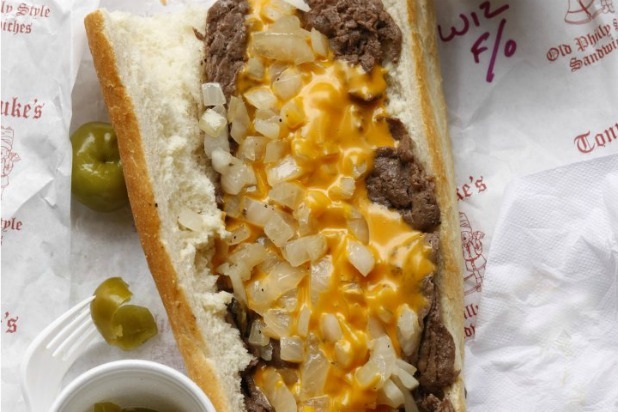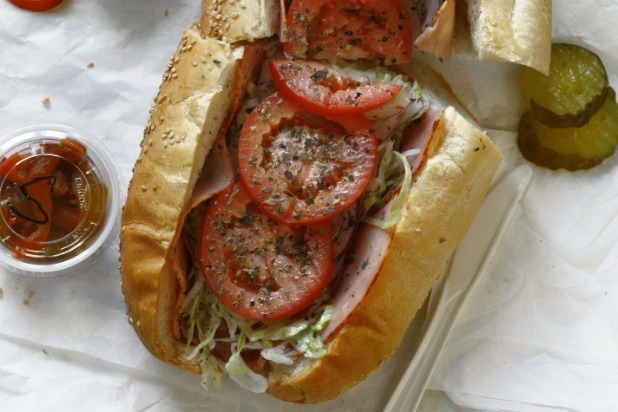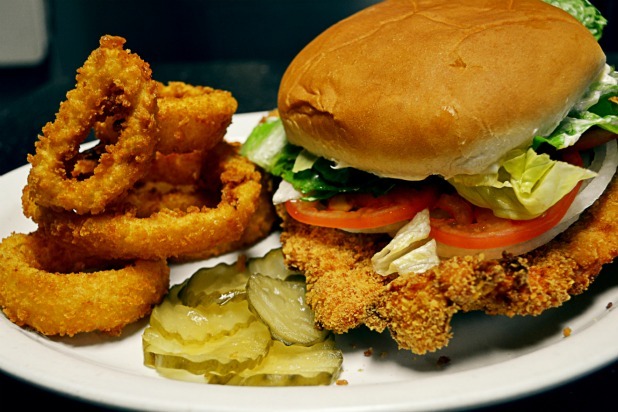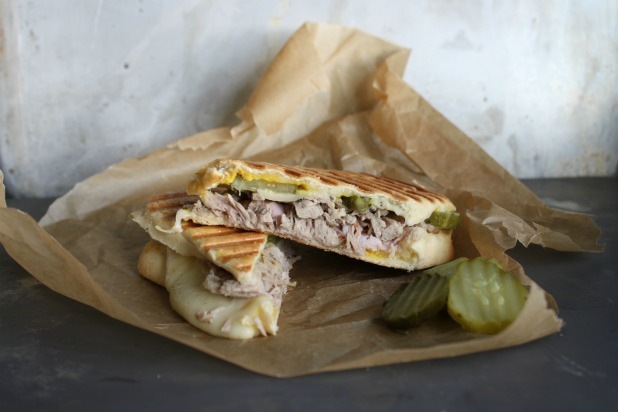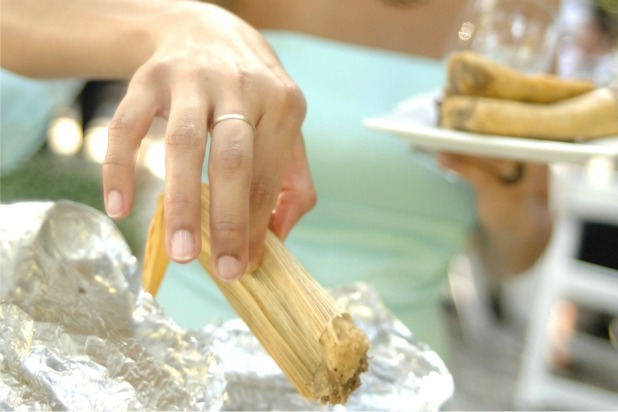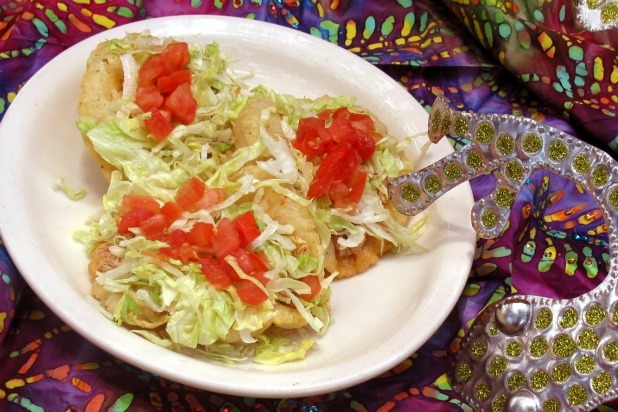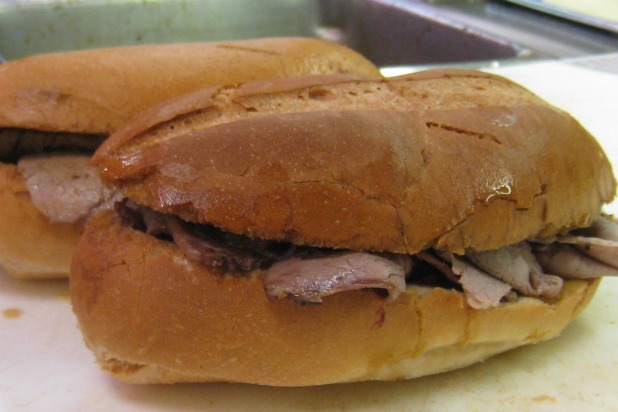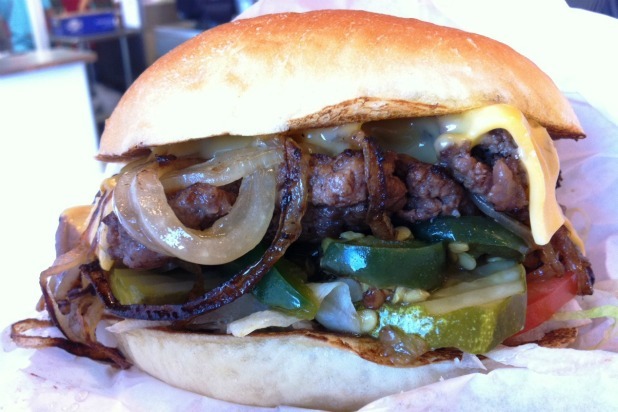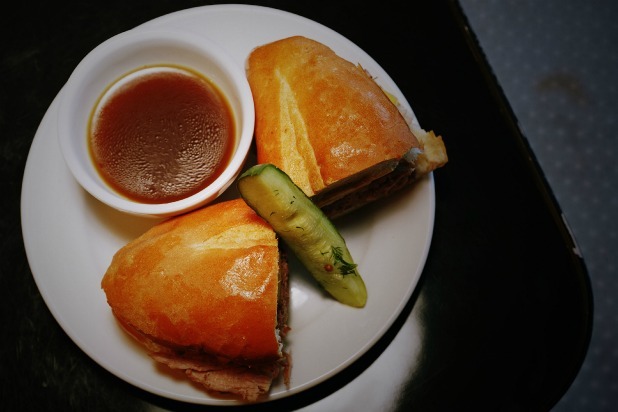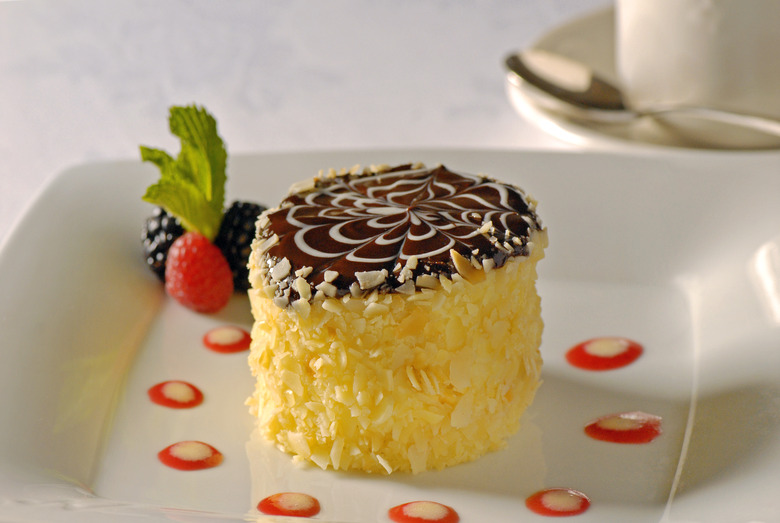NBA Playoffs 2012 Food Fight Slideshow
Cheesesteak Origins: The story goes that South Philadelphia hot dog vendor Pat Olivieri put some beef from the butcher on his grill and a taxicab driver noticed the alluring aroma and asked for his own steak sandwich. The next day, rumor of the delicious lunch had spread, and cabbies around the city came to Olivieri demanding steak sandwiches. Soon after, Olivieri opened Pats King of Steaks on Ninth Street and Passyunk Avenue. Cheese was eventually added to the recipe, according to the Greater Philadelphia Tourism Marketing Corporation, a private, nonprofit organization that promotes leisure travel to Philadelphia and the countryside.
Hoagie (Philadelphia)
Hoagie Origins: Accounts vary greatly, but a popular version according to the Greater Philadelphia Tourism Marketing Corporation is that "during the Depression, an unemployed Philadelphian named Al DePalma went to Hog Island to find work on the shipyard. When he saw workers on their lunch breaks eating giant sandwiches, his first thought was, 'Those fellas look like a bunch of hogs.' Instead of applying for a job, he decided to open up his own luncheonette and listed the sandwiches on his menu as 'hoggies.' During the late 1930s, DePalma joined forces with Buccellis Bakery and developed the perfect 8-inch roll. Later, during World War II, he turned the back room of the restaurant into a factory to supply sandwiches for the shipyard workers, thus earning him the nickname as 'The King of the Hoggies.' Because customers kept calling them 'hoagies,' he eventually changed the name."
The Pork Tenderloin (Huntington, Ind.)
Pork Tenderloin Sandwich Origins: The tenderloin is a nod to the state's German heritage. Hundreds of years ago, German immigrants brought a love for pork to the state and the tenderloin is a direct culinary descendent of schnitzel. Nick Freienstein loved schnitzel, so he basically put schnitzel on a bun, according to Jean Anne Bailey, owner of Nicks Kitchen, where Freienstein served his culinary creation in 1908, four years after inventing the pork tenderloin sandwich.
Cuban Sandwich (Cuba)
Cuban immigrants brought the toasted ham and cheese sandwich to Miami, where it has become a staple on the menus at Cuban restaurants.
Tamale (Aztecs, 7000 B.C.)
Tamales' Origins: Tamales can be traced back to the Aztecs in pre-Columbian history, as early as 7000 B.C. The tribes needed a portable, hearty food, and so tamales were invented, according to the San Antonio Convention and Visitors Bureau.
Puffy Tacos (San Antonio, TX)
Best Places to Eat: Many restaurants claim to have invented the puffy taco. A few to try are Rays Drive Inn, Henrys Puffy Tacos (the mascot of the minor league baseball team, San Antonio Missions, is Henry the Puffy Taco), Los Barrios, and Taco Taco Caf.
French Dip Sandwich (Philippe, Los Angeles)
French Dip Sandwichs Origin #1: The original owner of Philippe's, Philippe Mathieu ("Frenchy") accidentally invented the French Dip Sandwich when the roll was mistakenly dropped in the roasting pan filled with juice still hot from the oven.
Onion Burger (Oklahoma)
Onion Burgers Origins: The onion burger originated during the Great Depression as a way to make beef go further. Thinly shredded onions were pressed into ground beef, which saved money but also tasted great.
French Dip Sandwich (Cole's, Los Angeles)
French Dip Sandwichs Origin #2: More than 100 years ago, a customer came to Coles for one of Coles famous hand-carved beef sandwiches with aching gums and asked if the chef could make the sandwich easier to bite into. House chef Jack Garlinghouse dipped the bread in the liquid from the meat (au Jus).
Boston Cream Pie (Boston)
Boston Cream Pies Origins: The culinary staff at Parkers Restaurant is known for making history it launched the culinary careers of Emeril Lagasse, Lydia Shire, and Jasper White, and Vietnamese leader Ho Chi Minh served as a baker in the bakeshop and Malcolm X was a busboy so its not surprising that the Boston cream pie was invented here. Parker's Restaurant has also been the workplace of cultural icons.
